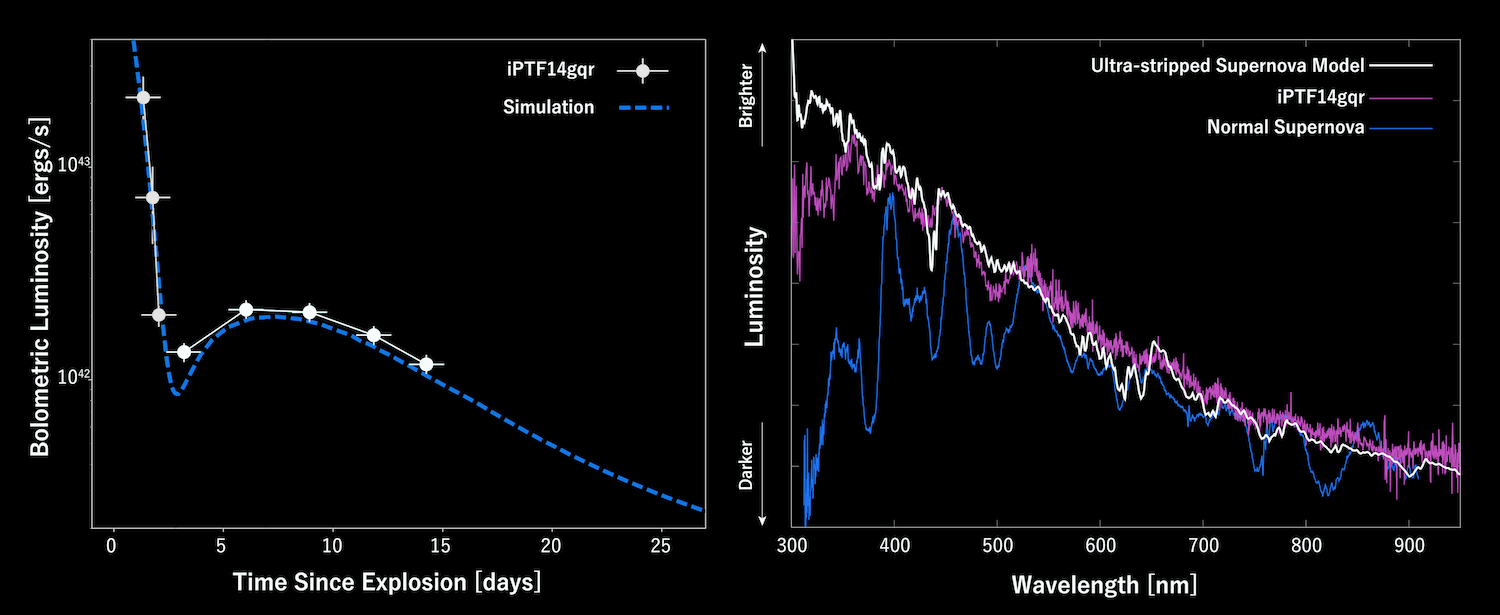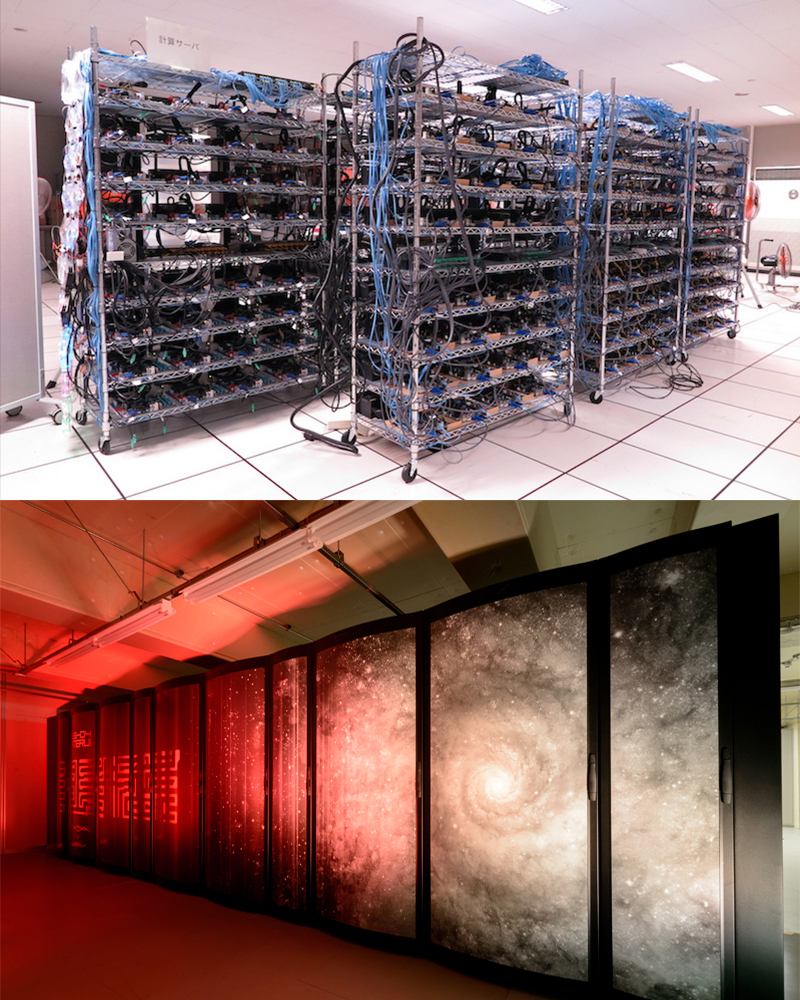An international research team including Takashi Moriya at DTA/NAOJ discovered the first recorded "ultra-stripped supernova," a rare, faint type of supernova that is believed to play a role in the formation of binary neutron star systems. These findings will advance our understanding of a wide variety of topics ranging from gravitational waves to the origin of precious metals like gold and platinum. This research was published in Science on October 12, 2018. (October 12, 2018 press release)

[Small size, PNG (1.7 MB)][Large size, PNG (5.1 MB)]

[Black, PNG (2.9 MB)] [White, PNG (2.9 MB)]
See the full story: DTA/NAOJ Press Release "Little Supernova is Big Discovery: the Origin of Binary Neutron Stars"
[Computers used in this research]
 In this research, "PC Cluster" and the supercomputer "ATERUI" operated by CfCA were used for calculations of stellar evolution and simulations for observational characteristics of a ultra-stripped supernova.
In this research, "PC Cluster" and the supercomputer "ATERUI" operated by CfCA were used for calculations of stellar evolution and simulations for observational characteristics of a ultra-stripped supernova.
"PC Cluster" (upper panel) is the system for small-scale and non-parallel simulations. This system consists of 224 nodes as of October 2018.
"ATERUI" (lower panel) is NAOJ's 4th generation supercomputer dedicated for astronomical simulations. The theoretical peak performance is 1.058 Pflops. This system had been operated until March 2018.
[Paper Details]
Title: "A hot and fast ultra-stripped supernova that likely formed a compact neutron star binary"
Journal: Science
Authors: K. De, M. M. Kasliwal, E. O. Ofek, T. J. Moriya, J. Burke, Y. Cao, S. B. Cenko, G. B. Doran, G. E. Duggan, R. P. Fender, C. Fransson, A. Gal-Yam, A. Horesh, S. R. Kulkarni, R. R. Laher, R. Lunnan, I. Manulis, F. Masci, P. A. Mazzali, P. E. Nugent, D. A. Perley, T. Petrushevska, A. L. Piro, C. Rumsey, J. Sollerman, M. Sullivan, and F. Taddia
DOI: 10.1126/science.aas8693
[For the Use of Contents in This Website]
- Contents are to be used with a clear indication of its copyright (e.g. (c) NAOJ.)
- If you would like to use the contents found in this web site, please follow Terms of Use of the Website of NAOJ.
[Related Links]
Department of Theoretical Astronomy (DTA), NAOJ Press Release "Little Supernova is Big Discovery: the Origin of Binary Neutron Stars"
NAOJ Press Release "Little Supernova is Big Discovery: the Origin of Binary Neutron Stars"
Caltech/GROWTH Press Release "Dying Star Emits a Whisper –– The death of a massive star and the birth of a compact neutron star binary"
Takashi Moriya Personal Webpage
